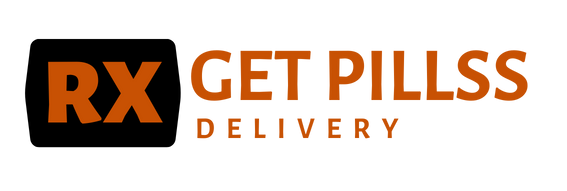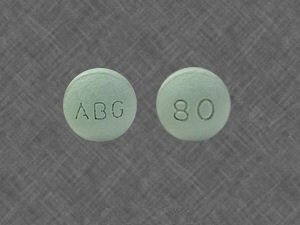Oxycodone 80mg
$404.00 – $854.00
+1 (862) 505-1407 Start Live Chat
Description
Understanding Oxycodone: What You Need to Know | Buy Oxycodone Online
Oxycodone is a potent opioid analgesic primarily employed in the management of moderate to severe pain. Classified under prescription medications, oxycodone is often recommended for patients who do not find relief from over-the-counter analgesics. It is formulated to alleviate pain from various conditions, including surgery, injury, or chronic ailments such as cancer.
The medication acts on the central nervous system to modify the way the body perceives pain. By binding to specific opioid receptors in the brain, oxycodone decreases the sensation of pain and enhances the individual’s overall comfort. Patients may find oxycodone particularly beneficial not only for immediate relief but also for its longer-lasting effects, depending on the formulation – immediate-release or extended-release.
However, it is imperative to adhere to prescribed dosages when using oxycodone. Misuse or exceeding the recommended amount can lead to serious risks, including dependency, tolerance, and a heightened potential for overdose. The importance of responsible use cannot be overstated, as these risks drastically increase when the medication is taken without medical supervision.
Common side effects of oxycodone include drowsiness, constipation, nausea, and dizziness. While some individuals may experience mild reactions, others may endure more severe or life-threatening side effects such as respiratory depression. Therefore, monitoring and discussion with healthcare providers are crucial for ensuring safety.
In light of these considerations, understanding oxycodone’s benefits alongside its risks is essential for anyone contemplating its use. By taking a comprehensive approach towards pain management and seeking professional guidance, patients can make informed decisions that prioritize their health and wellbeing.
House of Pills: A Trusted Online Pharmacy
In the pursuit of purchasing medications online, it is paramount to identify a reputable pharmacy that ensures a safe and reliable experience. House of Pills has emerged as a well-regarded online pharmacy, particularly for those seeking oxycodone 80mg. Established with a commitment to customer safety and medication integrity, House of Pills operates under strict regulations that govern online pharmacies. It is crucial to verify credentials, and House of Pills stands out with certifications from relevant health authorities, ensuring compliance with legal standards.
Customer reviews serve as a testament to the quality and service provided by House of Pills. Numerous positive testimonials highlight the pharmacy’s efficiency, prompt delivery, and dedicated customer support. Users have expressed satisfaction not only with the purchasing process but also with the professionalism exhibited by the staff. Such experiences are critical indicators of a pharmacy’s reliability, offering potential buyers peace of mind when purchasing medication like oxycodone.
When exploring online pharmacies, distinguishing trustworthy platforms from those that may sell counterfeit products is essential. To gauge a pharmacy’s legitimacy, check for proper licensing information and look for seals of approval from third-party organizations. It is also advisable to read for customer reviews, as they can provide insights into the legitimacy and service quality of the pharmacy. Ensuring that an online pharmacy has transparent policies regarding privacy and returns also contributes to a secure shopping experience.
Finally, purchasing oxycodone or any medication from a verified source significantly reduces the risk of acquiring counterfeit products, which can lead to serious health risks. House of Pills exemplifies a commitment to customer safety with stringent quality control measures and transparent business practices. Thus, for individuals considering buying medications online, House of Pills emerges as a trusted option worthy of consideration.
The Process of Buying Oxycodone 80mg Online
Purchasing oxycodone 80mg online from reputable providers such as House of Pills can streamline the process of obtaining this medication. However, it is crucial to adhere to legal regulations and ensure you are obtaining your prescription safely. The first step in this process is to ensure you have a valid prescription from a licensed healthcare professional. Without this, it is illegal to purchase controlled substances, including oxycodone, online.
Once you have a prescription, you can proceed to create an account on the House of Pills website. The registration process typically involves providing personal details, such as your name, contact information, and details about your prescription. Ensure that all information submitted is accurate to prevent issues with your order. After creating an account, you can log in to the site and access the catalog of available medications.
Navigating the website is generally user-friendly, as you can search for oxycodone 80mg using the search bar or by browsing the pain management category. Upon locating the medication, you will be directed to a product page with important details, including dosage information and pricing. Clicking on the “Add to Cart” button enables you to place the medication in your virtual shopping cart.
Following this, you can proceed to checkout, where you will be prompted to enter your payment information. House of Pills usually offers multiple payment options, such as credit/debit cards or digital payment methods, for your convenience. Once your payment is processed, you will select your preferred shipping method. Shipping methods may vary, with some offering expedited delivery for quicker access to your medication. After completing your order, you will receive an email confirmation detailing the shipping time, which is typically estimated based on your location.
Safety Precautions When Purchasing Medications Online
In the digital age, the convenience of purchasing medications online has become increasingly popular. However, it is essential to prioritize safety, especially when buying potent opioids like oxycodone. To ensure the security of your personal and financial information, begin by verifying the legitimacy of the online pharmacy. A reputable pharmacy will require a valid prescription from a licensed healthcare provider and will not promote the sale of controlled substances without proper medical documentation.
Be on the lookout for warning signs of a fraudulent pharmacy. If a website offers medications at prices that appear too good to be true or does not require a prescription, it is likely operating illegally. Additionally, a legitimate pharmacy will have a licensed pharmacist available to address any concerns or answer questions regarding the medication. You can also check if the pharmacy is accredited by organizations such as the National Association of Boards of Pharmacy (NABP) to boost your confidence in their operation.
Moreover, understanding local laws regarding the purchase of controlled substances is paramount. In many jurisdictions, the sale of medications like oxycodone is strictly regulated, and purchasing such medications from an unregistered source could lead to legal repercussions. Therefore, familiarize yourself with your local regulations to avoid potential legal issues.
Consulting with a healthcare provider before using oxycodone is equally important. This step ensures that the medication is suitable for your medical condition and can help mitigate any risks associated with improper use. Your healthcare provider can provide personalized guidance regarding dosage and potential interactions with other medications you may be taking. These precautions are vital in safeguarding your health and well-being while navigating the complexities of online pharmacy transactions.
Post-Purchase Considerations and Support
After purchasing oxycodone 80mg online, it is crucial to handle the medication responsibly to ensure both safety and efficacy. First, proper storage of the medication is essential. Oxycodone should be kept in a secure place, preferably in a locked cabinet or drawer, away from children and pets. The environment should be cool and dry, protected from excessive moisture and heat to maintain the potency of the medication.
When it comes to disposal, unused or expired oxycodone should not be thrown away in the household trash or flushed down the toilet, as improper disposal can lead to accidental ingestion or environmental contamination. Instead, consider utilizing a drug take-back program or follow specific disposal instructions provided by a pharmacist or local waste authorities. These steps are important in preventing misuse and protecting the community.
Moreover, managing potential side effects that may arise from oxycodone usage is a vital aspect of post-purchase care. Common side effects include drowsiness, constipation, or nausea. Patients should be closely monitored for any adverse reactions, particularly when beginning treatment. It is advisable to keep a log of any side effects experienced and evaluate if they warrant contacting a healthcare professional.
Knowing when to seek medical advice is equally important. If side effects become severe or unmanageable, or if there is an unexpected reaction, contacting a doctor promptly is essential. In addition, it is important to maintain open communication with the prescribing physician and to utilize customer support services available through House of Pills. This service can assist customers with inquiries regarding their orders, medication management, and addressing complications related to oxycodone use. Accessible support ensures a seamless experience and reinforces safe practices in medication management.
Additional information
| Pills | 120, 180, 240, 300, 60 |
|---|
6 reviews for Oxycodone 80mg






Riley (verified owner) –
The product is firmly packed.
Charles (verified owner) –
The product is firmly packed.
David (verified owner) –
Good service.
Mason (verified owner) –
Good quality.
Angel (verified owner) –
Good service.
Samuel (verified owner) –
Good service.